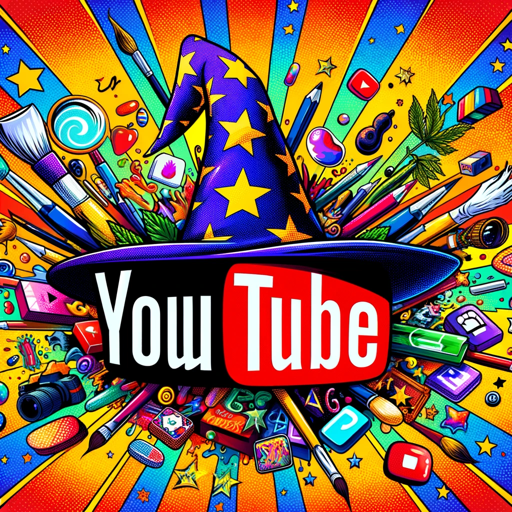The 1-Page Marketing Plan-marketing strategy planner
AI-Powered Marketing Plan on a Single Page
Create a 1-Page Marketing Plan for my cafe.
Generate marketing strategies for my online store.
Help me with marketing ideas for my new app.
I need a marketing plan for my consulting business.
Related Tools
Load MoreBusiness Development & Digital Marketing Plan
Expert in Business Development & Digital Marketing Strategy

GTMwiz: Build your go-to-market strategy
Marketing, Sales, Customer Success, Revenue Operations, and Enablement teams now have a GTM expert as part of their team. GTMwiz uses a comprehensive, data-driven and expert proven approach trained by some of the best go-to-market leaders work and experi
Monster Marketing Plan Generator
Crafts tailored marketing plans with a creative and practical approach.

Marketing Advice
Generates marketing strategies based on “22 Immutable Laws of Marketing.”

Strategic & Marketing Plan Maker
I create tailored marketing plans and analyze trends for strategic guidance.

Marketing Proposal Pro
I specialize in marketing project proposals.
20.0 / 5 (200 votes)
Introduction to The 1-Page Marketing Plan
The 1-Page Marketing Plan is a strategic tool designed to simplify and streamline the marketing planning process for businesses of all sizes. The concept, developed by Allen Dib, emphasizes creating a concise, actionable marketing plan that fits on a single page. This approach helps businesses focus on key marketing activities without getting bogged down in overly complex strategies. The plan is divided into three phases: Before, During, and After, each containing three stages that guide businesses through identifying their target market, crafting their message, and selecting media channels, capturing and nurturing leads, and finally delivering exceptional service to increase customer lifetime value and stimulate referrals. For instance, a small bakery might use the plan to identify local food enthusiasts as their target market, create engaging social media content showcasing their baking process, and offer loyalty programs to encourage repeat business.

Main Functions of The 1-Page Marketing Plan
Target Market Identification
Example
A fitness studio identifying busy professionals as their target market.
Scenario
The studio conducts market research to understand the needs of busy professionals, such as flexible class schedules and quick workout sessions. They create an ideal customer avatar and tailor their marketing efforts to attract this demographic.
Message Crafting
Example
An eco-friendly cleaning service developing a unique selling proposition (USP).
Scenario
The cleaning service crafts a message highlighting their use of non-toxic, environmentally friendly products. They emphasize benefits like safer homes for families and pets, differentiating themselves from competitors using traditional cleaning agents.
Media Selection
Example
A local restaurant choosing social media platforms for advertising.
Scenario
The restaurant decides to focus on Instagram and Facebook to reach food enthusiasts. They regularly post high-quality photos of their dishes, share customer reviews, and promote special events, effectively engaging with their audience and driving foot traffic.
Lead Capture Systems
Example
An online coaching service using lead magnets.
Scenario
The coaching service offers a free e-book on personal development in exchange for email addresses. This helps them build a list of potential clients interested in their services, allowing them to follow up with targeted email campaigns.
Lead Nurturing Systems
Example
A software company using automated email sequences.
Scenario
The company sends a series of educational emails to leads who have downloaded a free trial of their product. These emails provide tips on using the software effectively and highlight features, gradually moving the leads towards making a purchase.
Sales Conversion Strategies
Example
A real estate agency offering bundled services.
Scenario
The agency provides a package deal that includes home staging, photography, and marketing services at a discounted rate. This bundled offer attracts more clients by providing added value, leading to higher conversion rates.
Customer Experience Enhancement
Example
A spa implementing a seamless booking system.
Scenario
The spa adopts an online booking system that allows clients to easily schedule appointments, receive reminders, and provide feedback. This improves the overall customer experience, leading to increased satisfaction and repeat business.
Customer Retention Strategies
Example
A subscription box service using loyalty programs.
Scenario
The service offers points for each box purchased, which can be redeemed for discounts or exclusive products. This encourages customers to continue their subscriptions and increases customer lifetime value.
Referral Programs
Example
A tutoring center rewarding referrals.
Scenario
The center offers a discount on future tutoring sessions for clients who refer new students. This incentivizes existing clients to spread the word, helping the center grow its customer base through positive word-of-mouth.
Ideal Users of The 1-Page Marketing Plan
Small Business Owners
Small business owners, such as local retailers, service providers, and entrepreneurs, benefit from The 1-Page Marketing Plan by gaining a clear, focused strategy that helps them effectively allocate limited resources, attract their target audience, and grow their business without the need for extensive marketing expertise.
Marketing Professionals
Marketing professionals working within larger organizations or agencies can use The 1-Page Marketing Plan to create concise, easy-to-understand marketing strategies for their clients or departments. This tool helps streamline planning processes, ensures alignment with business goals, and facilitates clear communication of marketing objectives and tactics.
Startups
Startups can leverage The 1-Page Marketing Plan to quickly develop and implement marketing strategies that attract early adopters and investors. The simplicity and clarity of the plan allow startups to stay agile, make data-driven decisions, and adapt their marketing efforts as they grow and evolve.
Freelancers and Consultants
Freelancers and consultants in fields such as graphic design, coaching, and consulting can use The 1-Page Marketing Plan to effectively market their services, attract clients, and build their personal brands. The plan helps them focus on key marketing activities that generate leads and convert them into long-term clients.

Steps to Using The 1-Page Marketing Plan
1
Visit aichatonline.org for a free trial without login, also no need for ChatGPT Plus.
2
Familiarize yourself with the phases and stages: Before, During, and After, each with three key stages. These cover everything from identifying your target market to stimulating referrals post-purchase.
3
Start filling out the plan by identifying your target market, crafting your message, and choosing the right media channels to reach your audience. Use clear, concise bullet points.
4
Refine your lead capture, nurturing, and conversion strategies during the ‘During’ phase. Ensure you’re collecting data on prospects, nurturing relationships, and converting leads effectively.
5
Focus on customer retention and referral stimulation in the ‘After’ phase. Implement strategies that increase customer lifetime value and encourage word-of-mouth marketing.
Try other advanced and practical GPTs
The Illustrator
AI-powered tool for creating custom pen-and-ink sketches

data trip
AI-driven data interpretation and research

Code Companion
AI-powered tool for coding solutions

VinuChain and VINU GPT
AI-powered insights for VinuChain's feeless ecosystem.

Architecture AI
AI-powered architecture at your fingertips.

猫耳メイドるみほたん
Abstract problem-solving made easy with AI

Thumbnail Generator
Create Engaging Thumbnails with AI

GPT Action Schema Generator
Automate your API documentation with AI.

Write a romance novel
AI-powered romance novel creation

Moss, the Go expert
AI-powered Go development assistance

Orion Flight Enhanced
AI-powered flight tracking and health monitoring.

מוקד התמיכה בבינה מלאכותית של דרור גלוברמן
AI-powered technical support for everyone

- Lead Generation
- Marketing Strategy
- Business Planning
- Customer Retention
- Sales Funnel
FAQs about The 1-Page Marketing Plan
What is The 1-Page Marketing Plan?
The 1-Page Marketing Plan is a streamlined tool that helps businesses map out their marketing strategy on a single page, covering the entire customer journey from awareness to retention.
Who can benefit from The 1-Page Marketing Plan?
Entrepreneurs, small business owners, and marketers who need a clear, concise, and actionable marketing strategy can benefit from this tool. It’s designed for simplicity and effectiveness.
How is The 1-Page Marketing Plan structured?
The plan is divided into three phases: Before, During, and After. Each phase contains three stages that guide you from targeting your market to nurturing leads and fostering customer loyalty.
Can I customize The 1-Page Marketing Plan for my industry?
Yes, the plan is highly customizable. You can tailor each phase and stage to fit the unique needs and challenges of your specific industry or business model.
What makes The 1-Page Marketing Plan different from other marketing tools?
Its simplicity and focus on action make it stand out. Unlike complex, multi-page plans, this tool forces you to be concise and clear, making it easier to implement and track progress.